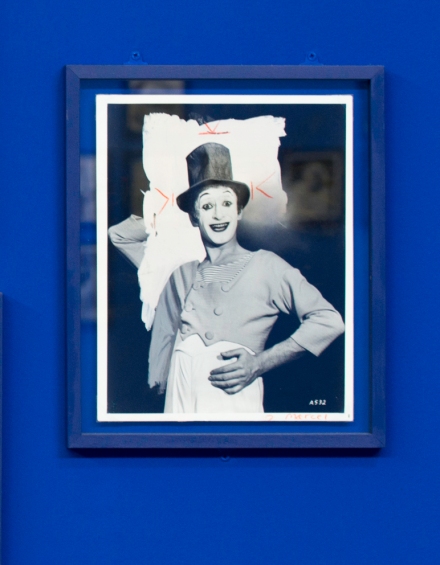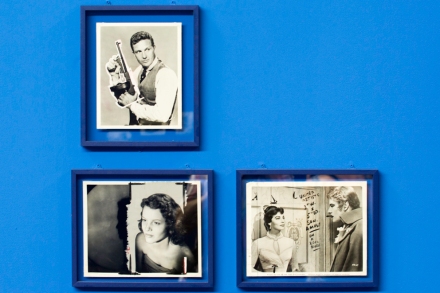Section three starts with some exercises on portraits, asks the student to draw a few, make some self portraits, ask others to determine a portrait of the student as they see the student. I have photographed people for the best part of a third of a century and so before embarking on a whole set of exercises, I decided I would set out my thoughts on the ‘portrait’, what ‘a portrait’ means to me. These thoughts are all about the contracted arrangement for financial purposes or not between subject and portraitist.
The apparent, or supposed, mimetic quality of the image is what draws most people to consider a photographic portrait valid. The ubiquity today of digital imagery has enabled more people to be photographed than ever the marketing men in Kodak a century ago could have imagined. The statistics are astronomic and aren’t worth quoting because they will be out of date long before these thoughts can be saved to virtual memory.
I would contend that there is no such thing as an accurate portrait of someone, that no instant of the camera’s action can capture more than just a notion of a person’s portrait. Of course the eyes will be the subject’s eyes, the mouth, the nose and so on; I agree I think with Barthe’s contention that there is no such thing as an un-posed portrait, that the complicit agreement between portraitist and subject will distort the way the sitter is represented. I also think of course, by the same notion, that a painted portrait is an even greater construction – but the painting comes with added political and commercial considerations that is not normal or likely for the photographic image.
Richard Brilliant is his book ‘Portraiture’ talks about ‘impersonation’, how we all do it deliberately all the time, and sometimes subconsciously, but in a portrait more determinedly so, which I suppose similar to what Barthes suggests and this is another level of comprehension that I have become to understand. This complicitness between subject and artist is one that I now becoming accustomed to. Of course ‘posing’ a subject is an important skill, but the nature of that posing depends on so many factors; is it a commercial arrangement – is the subject paying to be a subject for purposes beyond the capturing of them in a moment in time? Is the portrait to be used as part of the artist’s investigation into a subject/concern/issue and therefore to be part of a wider brief? All these, and more, considerations add accents to the process of portrait production.
A while ago I went to the Glamour of the Gods exhibition at the NPG; before starting this course I had done a lot of work in trying to develop my own interpretation of those ‘glamorous’ photographs and had already begun to ask questions about depiction, about the way by which the image becomes more and more fictional, firstly by the use of manipulation; Hurrell, or maybe his assistants work in this field more than half a century before ‘photoshopping’, had a practice that would portray his subjects – or perhaps the personas being marketed by the studios – to their best. Actors are usually willing accomplices in the act of delusion, it is, after all, a part of their craft.
The course asks some questions about the process of portrait photographer suggesting, for example, that it is a ‘one to one’ relationship between photographer and sitter. Having endured a video of Rankin recently promoting his ‘Rankin’s Alive: In the Face of Death’ I failed to recognize this one on one relationship and so assume that the course notes refer to mere mortals. I have always been more comfortable when photographing posed/formal portraits to be on a one to one basis. I suppose I have always recognised that the relationship between the subject and me is better served without the need for the sitter to be posing for another audience member as well.
The course notes also refer to the notion that the portrait photographer is in control of how the image will be created – no mention of how it might be read/understood though. The photographer can decide on background, lighting, clothing – or not etc. However I wonder about a few aspects of this. Firstly the painter has a good deal more freedom, I listened to a programme some time ago on portraiture here where Lucien Freud takes eighteen months to paint a portrait of Martin Gayford – ‘The Man with a Blue Scarf’. And all the time I’m listening to the essay I am wondering about light, clothing, whether it’s always just after he’s shaved, about the ageing process, Gayford wasn’t a young man when the work started, nor was Freud! But never mind a painted portrait still seems to have primacy in the world of portraits and the notions of verisimilitude aren’t foremost in most people’s minds when looking at one of Freuds, or indeed most painter’s portraits; it is now common currency to assume that to get a perfect likeness you either need to have a photograph, or at least paint in a photographical way.
So, whilst the artist can, to a greater or lesser extent control the physical conditions that the portrait exists in, they cannot control how the image, with gouache or pigment ink, will be read. I was particularly interested in an exhibition in Arles recently of “more than a hundred press photos…… retouched with gouache and ink, by brush and airbrush, bearing reframing marks, handwritten technical notes, and markes in soft pencil. Proofs that were corrected or sometimes altered by illustrators and traditional retouchers before publication.” Exhibition catalogue pp 322.
These ‘new’ images, these re-presented portraits, are a determined attempt to direct the viewer to a certain place. Much in the same way the original photographer had an intent (well I assume so), then these diverted directions alter our conscious perception and reading of the image. The addition of a shirt, tie and jacket to the newly released gangster James “Big Jim” Morton, seemed an odd act of rehabilitation and Marcel Marceau’s ‘loss’ of an arm would surely have been an issue for a mime artist?
There were two other exhibitions in Arles where original portraits were re-presented, usually by the addition of hand colouring; Studio Fouad, Beirut, and Van-Leo, Cairo, both of whom ‘dressed’ the image with a patina of glamour, to replace them in an ‘other’ life, much in the same way I thought about Malick Sidibe’s studio shots from Mali. The difference though with these ‘press’ shots was that they demonstrate how mutable the two-dimensional image is, how the receptiveness of the image is driven by both context (changed at will by the processors) and the narrative – which in the case of press photos will be the accompanying text of course.
Portraits I would say therefore can only place the sitter into a differentiated place; and perhaps the more contrived they are, the more purposeful the construction and therefore the more faithful the portrait is in portraying what the contrivance of a sitting sets out to accomplish.

